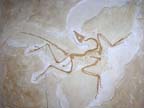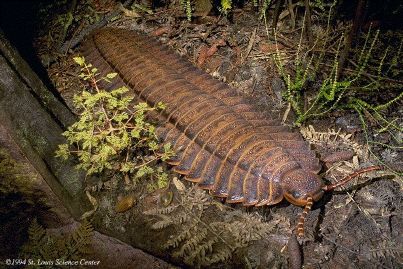 |
 |
 |
 |
 |
Produced
by the Population Genetics and Evolution class, Furman University |
||||
 |
 |
 |
 |
 |
Produced
by the Population Genetics and Evolution class, Furman University |
||||
 |
The
Carboniferous: Arthropleura |
 |
||
| Arthropleura
were enormous segmented millipede-like creatures; the largest terrestrial
arthropods that ever lived! They were protected by a hard, segmented exoskeleton
that covered their entire bodies. Fossil records indicate that they were
rarely prey to other organisms, perhaps because they grew to lengths longer
than two meters (Hannibal 2007). Each segment had two pairs of ventral
legs that allowed them to move in terrestrial and aquatic environments
(Martino et al. 2009). Their legs had multiple joints that permitted a
larger range of motion and articulation for lateral or forward movement,
and they may have been used for digging (White 1999). The huge size of
these and other arthropods (like the giant dragonfly, Meganeura) correlates
with the high levels of oxygen in the atmosphere; which would be necessary
to sustain such large arthropods (White 1999). Unlike modern millipedes,
there is no evidence of repiratory trachea - so they must have had either
book lungs or true lungs (White 1999). Arthropleura are useful
tools for investigating the environment during this period, since their
fossils have been discovered all over the world. Page by Pete Calomiris |
 |
| Picture from: Palaeos.com | |
|
Hannibal J. 2007. The Discovery of a Giant Arthropod Trackway. The Explorer. Accessed March 2010. Martino R, Greb S. 2009. Walking Trails of the Giant Terrestrial Arthropod Arthropleura from the Upper Carboniferous of Kentucky. Journal of Paleontology 83:140-146. White AT. 1999. Class? And Order Arthropleurida. Palaeos.org. Accessed March 2010. |